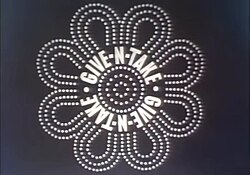| Revision as of 21:04, 22 October 2007 edit165.125.144.16 (talk) →Bonus Round← Previous edit | Revision as of 20:48, 20 December 2007 edit undoBriguy52748 (talk | contribs)Autopatrolled, Extended confirmed users, Pending changes reviewers13,654 edits →Bonus Round: 2=woNext edit → | ||
| Line 30: | Line 30: | ||
| The champion was given one final spin, and if the arrow landed in a pre-selected space (a 1-in-8 shot), they won a bonus $5,000 in cash plus the other prizes that their opponents had received during that game (usually about $10,000-$15,000). A player competed for up to five days or until reaching CBS's $25,000 limit. | The champion was given one final spin, and if the arrow landed in a pre-selected space (a 1-in-8 shot), they won a bonus $5,000 in cash plus the other prizes that their opponents had received during that game (usually about $10,000-$15,000). A player competed for up to five days or until reaching CBS's $25,000 limit. | ||
| ''Give-n-Take'' was one of |
''Give-n-Take'' was one of two back-to-back ] Daytime flops for emcee ] in ], following '']''. | ||
| ==Episode status== | ==Episode status== | ||
Revision as of 20:48, 20 December 2007
| Give-n-Take | |
|---|---|
 Give-n-Take title logo. Give-n-Take title logo. | |
| Created by | Nick Nicholson and Roger Muir |
| Starring | Jim Lange; Announcer: Johnny Jacobs |
| Country of origin | |
| Production | |
| Running time | 30 Minutes |
| Original release | |
| Network | CBS |
| Release | September 8 1975 – November 26 1975 |
Give-n-Take was an American game show based partly on Blackjack that starred Jim Lange and aired on CBS for 60 episodes between September 8 and November 26, 1975. The show – dominated by LED displays and buzzers — was considered a time filler until CBS was ready to unveil its hour-long The Price is Right format. The series was canceled shortly after the 60-minute TPiR premiered.
Rules of the Game
Four female contestants, including a returning champion, competed, using prizes as the playing cards. The contestants were seated around an eight-space spinner (an LED display designed like a game board spinner). Each contestant was given an up-prize with dollar-value announced to start the game.
Announcer Johnny Jacobs announced another prize but not the dollar value. Lange then read a general-knowledge question. The first to respond correctly won five spaces on the board while her opponents each got one space.
At that point, the LED spinner went into motion; the player signified when she wanted to stop the spinner by pressing her buzzer. Wherever the spinner landed, the player controlling that space could either keep the prize or pass it to one of her opponents. Play then repeated in the same manner, with a new prize described.
The idea was to build a prize package of as close to $5,000 without going over. Since they did not know the total retail value of their prizes, a player could freeze at any point if she thought she was close to the $5,000 limit, knowing she could not receive any more prizes. The player who had the package that was closest to $5,000 won her prize package and advanced to the bonus round. The other players did not keep their gifts.
Bonus Round
The champion was given one final spin, and if the arrow landed in a pre-selected space (a 1-in-8 shot), they won a bonus $5,000 in cash plus the other prizes that their opponents had received during that game (usually about $10,000-$15,000). A player competed for up to five days or until reaching CBS's $25,000 limit.
Give-n-Take was one of two back-to-back CBS Daytime flops for emcee Jim Lange in 1975, following Spin-Off.
Episode status
This show's status is unknown, and rumored to be completely destroyed. One episode exists on the trading circuit, in very poor condition.
See also
- Say When!! (a 1960s game show similar to Give-n-Take)
External links
This article about a television show originating in the United States is a stub. You can help Misplaced Pages by expanding it. |